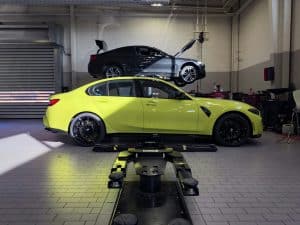How Vehicle Engineering Is Creating Smarter Transportation Solutions
Transportation is a vital aspect of our daily lives. We rely heavily on various forms of transportation to get us from one place to another efficiently and on time. Over the years, vehicle engineering has evolved exponentially, resulting in the development of smarter transportation solutions. From self-driving cars to fuel-efficient engines, vehicle engineering has revolutionized the way we move around. In this article, we will explore how vehicle engineering is creating smarter transportation solutions and its impact on our daily lives.
The Evolution of Vehicle Engineering
Vehicle engineering has come a long way since the invention of the first steam-powered vehicle in the late 18th century. With the advancement of technology, vehicles have become more efficient, safer and more environmentally friendly. The development of new materials, such as carbon fiber and lightweight alloys, have made vehicles lighter and more fuel-efficient. Moreover, the introduction of electric and hybrid vehicles has significantly reduced our dependence on fossil fuels, making transportation more sustainable.
Self-driving Cars: The Future of Transportation
The concept of self-driving cars may have seemed like science fiction a few decades ago, but today, it is becoming a reality. With the help of artificial intelligence and advanced sensors, self-driving cars are now able to navigate through traffic, make decisions and avoid accidents. This new technology will not only make transportation more convenient but also significantly reduce the number of accidents caused due to human error. Moreover, self-driving cars will also help reduce traffic and decrease travel time, making it a more efficient mode of transportation.
Collaborative Efforts in Vehicle Engineering
The development of smarter transportation solutions would not have been possible without the collaboration between vehicle manufacturers, engineers, and technology companies. This collaboration has resulted in the integration of advanced systems, such as GPS, sensors, and connectivity, in vehicles. These systems allow vehicles to communicate with each other and with infrastructure, providing real-time traffic updates, warning drivers of potential hazards and suggesting alternative routes. Additionally, this collaboration has also led to the development of smart parking systems, making it easier for drivers to find available parking spaces, reducing traffic congestion.
Impact on Society
The advancements in vehicle engineering have had a significant impact on our society. With the introduction of electric and hybrid vehicles, there is a significant reduction in air pollution, contributing to a cleaner and greener environment. Moreover, the integration of smart technology in vehicles has improved safety, making transportation safer for everyone. Smarter transportation solutions have also made it easier for people to commute, reducing the time and stress associated with daily transportation.
Future Possibilities
The future of vehicle engineering looks promising, with ongoing research and development of new technologies. With the rise of electric and autonomous vehicles, the need for fossil fuels and human intervention will decrease significantly. Moreover, the development of flying cars and hyperloop systems could revolutionize transportation even further, making long-distance travel more efficient and reducing the need for traditional modes of transportation such as trains and airplanes.
Conclusion
In conclusion, vehicle engineering has come a long way in creating smarter transportation solutions. With the integration of advanced systems, the development of electric and autonomous vehicles, and collaborative efforts between manufacturers and technology companies, transportation is becoming more efficient, safer, and sustainable. The impact of these advancements is not only limited to transportation but also on our environment and society as a whole. As we continue to push the boundaries of technology, the future possibilities of smarter transportation solutions are endless.









